Demonstration of World Record Transmission Capacity in a Single Optical Fiber over a 38-core 3-mode Optical Fiber
February 14, 2020
National Institute of Information and Communications Technology
Sumitomo Electric Industries, Ltd.
Points
- Transmission of 10.66 Pb/s with a spectral efficiency of 1158.7 bit/s/Hz over a 38-core 3-mode fiber
- A low-DMD, high core-count few-mode fiber, adoption of 256- and 64-QAM modulation
- Drastic increase of data-rate per fiber for intra- and inter data-center communication
Background
Achievements
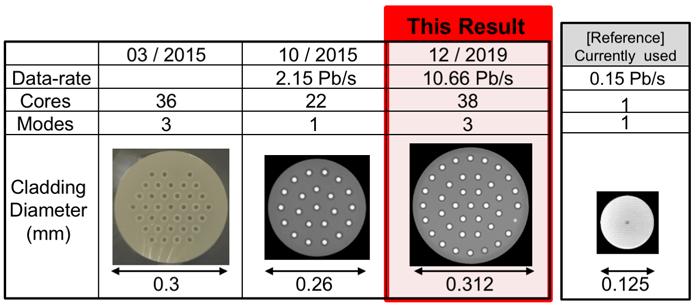
Future Prospects
References
Previous NICT and Sumitomo Electric Press Releases
- April 24, 2015 "Going beyond the Limits of Optical Fibers" - More than 100 spatial channels realized with 36 multimode cores, the world's highest number of cores -
- October 13, 2015 "Realization of World Record Fiber-Capacity of 2.15Pb/s Transmission" - Promising Technology for Long-haul High-capacity Transmission Employing Single-mode Multi-core Fiber and Optical Frequency Comb Source -
Appendix
1. Experimental System Demonstration
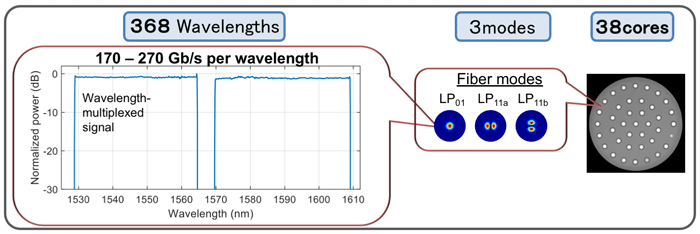
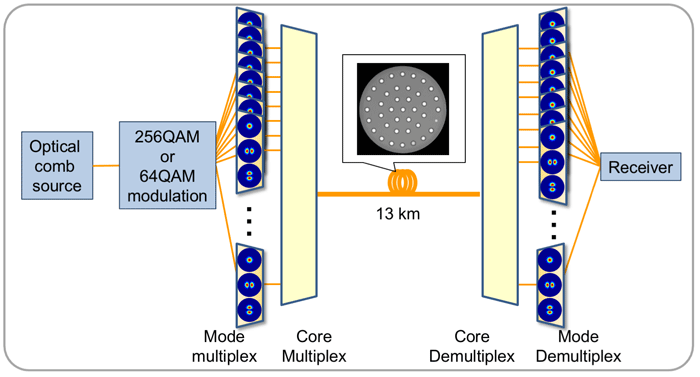
2. Experimental Results
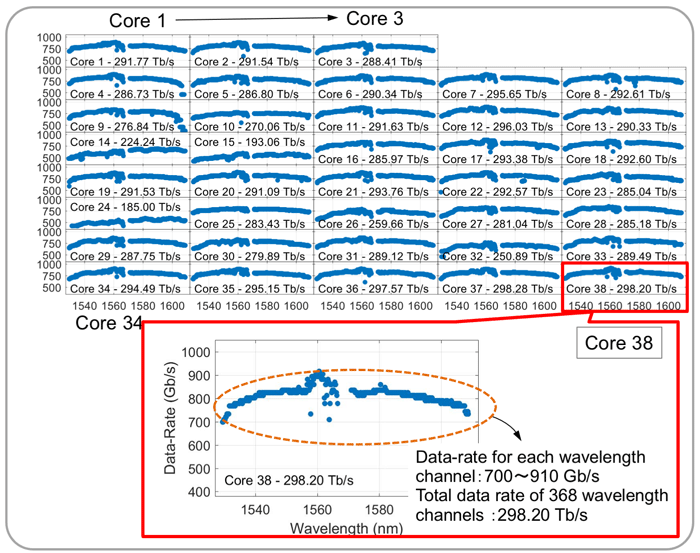
The number corresponds to the total data-rate that was transmitted in each core.
Glossary
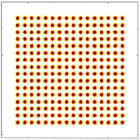

Reference of source: Sumitomo Electric
Technical Contact
AWAJI Yoshinari
Photonic Network System Laboratory
Network System Research Institute
NICT
Tel: +81-42-327-6337
E-mail:





















Media Contact
HIROTA Sachiko
Press Office
Public Relations Department
NICT
Tel: +81-42-327-6923
E-mail:




















NISHIHIRA Reika
Public Relations Department
Sumitomo Electric Industries, Ltd.
Tel: +81-3-6406-2701
E-mail:


























